Upclose and intricate on Hantu's reef
 December 20, 2009
December 20, 2009

Once again, Blog volunteer Jimmy Goh returns from a trip at Hantu Island with some fascinating macro insights into local seas. What a lovely perspective of these usually skittish animals! (Above: Ornate goby)
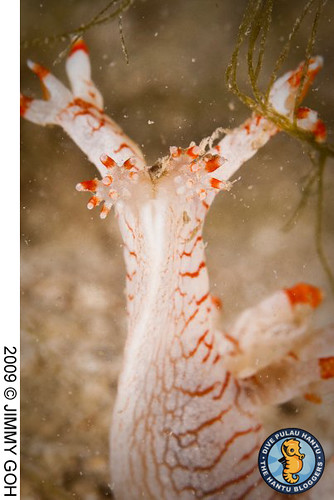 Though slugs are easier to photograph because they are slower than gobies, you rarely get to see them doing something different that can make a picture (and observing them!) more exciting. You can see how the Starry mouthed Bornella (left) gets its name – in this photo, its star-shaped oral tentacles are clearly visible. Known to be more active at night, these ornate-looking nudibanches are also popular with divers because they are known to be able to swim by flexing its long body from side to side.
Though slugs are easier to photograph because they are slower than gobies, you rarely get to see them doing something different that can make a picture (and observing them!) more exciting. You can see how the Starry mouthed Bornella (left) gets its name – in this photo, its star-shaped oral tentacles are clearly visible. Known to be more active at night, these ornate-looking nudibanches are also popular with divers because they are known to be able to swim by flexing its long body from side to side.
With this clear a view of its head, you also notice that its conical rhinophores are protected in sheaths on top of the head, giving the Bornella its bizarre appearance.
Bornella nudibanches have been observed and documented throughout Singapore shores.
Other nudibranches observed during this dive, such as the Polka dot nudibranch and the Slender Ceratosoma below.
On to bigger things, here’s a closeup of a cuttlefish. As Ria Tan, author of Wild Factsheets says, “Although better known as seafood, these delightful creatures are equally delicious to observe, with their colour changes and busy behaviour.”
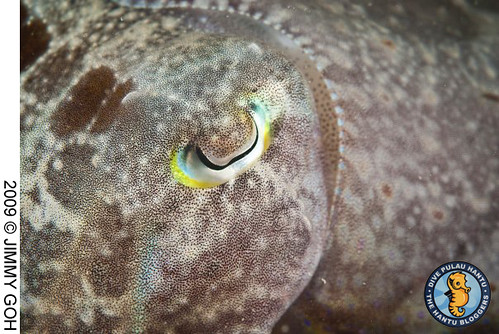
Cuttlefish eyes may seem completely different from ours but they are actually similar in construction to human eyes! Although color-blind, the cuttlefish has two of the most highly developed eyes in the animal kingdom. It can see well in low light and can also detect polarized light, enhancing its perception of contrast. While we humans reshape our lenses in order to focus on specific objects, the cuttlefish moves its lenses by reshaping its entire eye. Also, the cuttlefish’s eyes are very large in proportion to its body and may increase image magnification upon the retina, while the distinct “W”-shaped pupil helps control the intensity of light entering the eye. (Source: NOVA)

Sawtooth shrimp are poorly studied due to their elusive nature. In local waters, they appear to have a seasonal presence. They are always found on coral whips or gorgonian corals. They get their name from the long, serrated nose. Other common names include Needle shrimp, Sawblade shrimp, or Whip shrimp. It has been photographed extensive by underwater photography enthusiasts in the tropical Pacific, but less information is available about their behaviour and how they interact with the environment or other organisms. It’s a privilege to have such a beautiful and exotic creature in local waters.
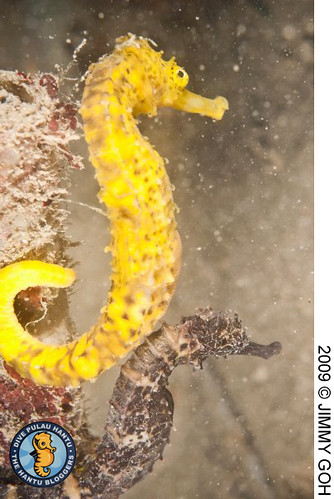
Though these two individuals look very different at first glance, they are actually the same species Hippocampus comes. Though this seahorse is common to local waters, it is listed as Vulnerable on the IUCN Redlist of Endangered Species. It is primarily threatened by coastal development.
Because they share the same range areas, Hippocampus comes is most often confused with Hippocampus kuda.
Though it not often that you get to photograph a pair of these seahorses together, they are known to occur in pairs on coral reefs.
The Tigertail seahorse is a symbol of local reefs. It is a favourite with divers and we hope to continue encountering them on our reefs for many many many more years to come!
To view more pictures from Jimmy’s dive, visit our Gallery.
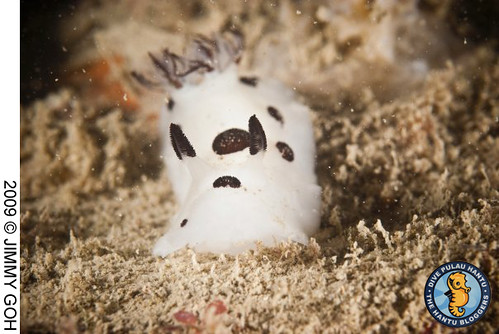
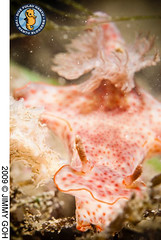
 Posted in
Posted in 



 content rss
content rss
COMMENTS